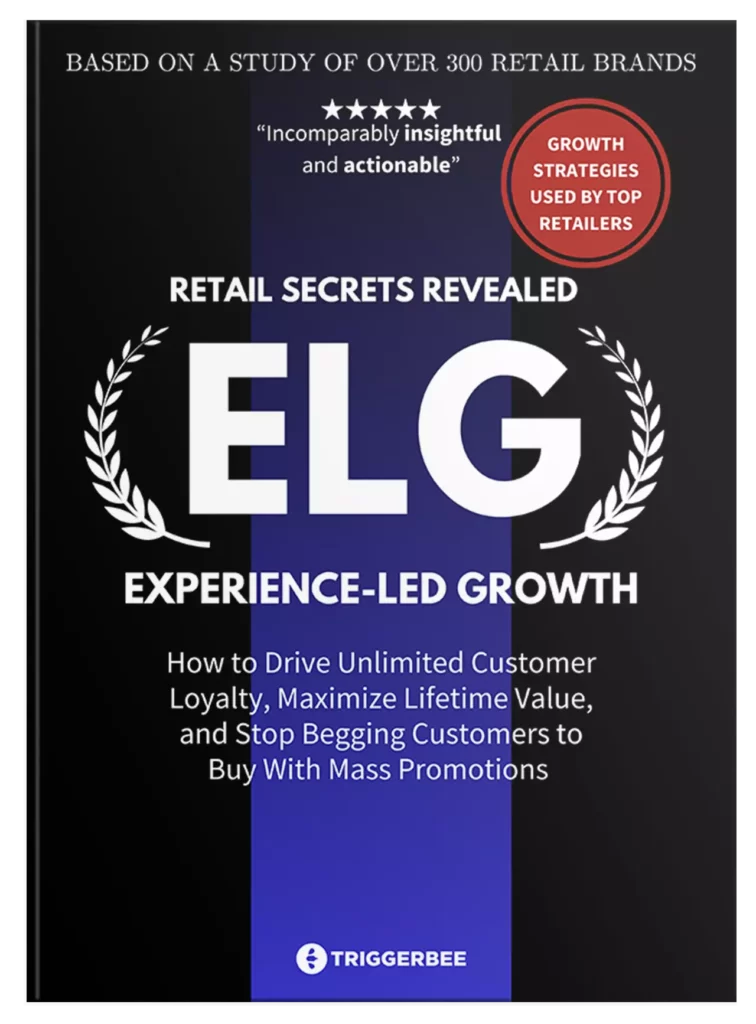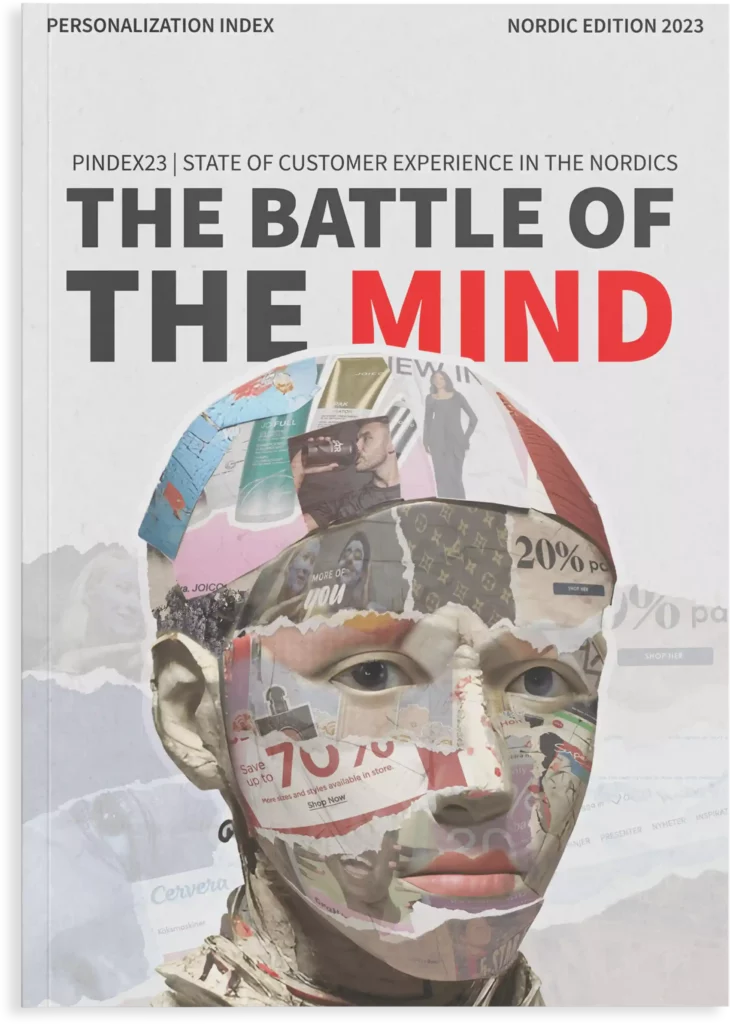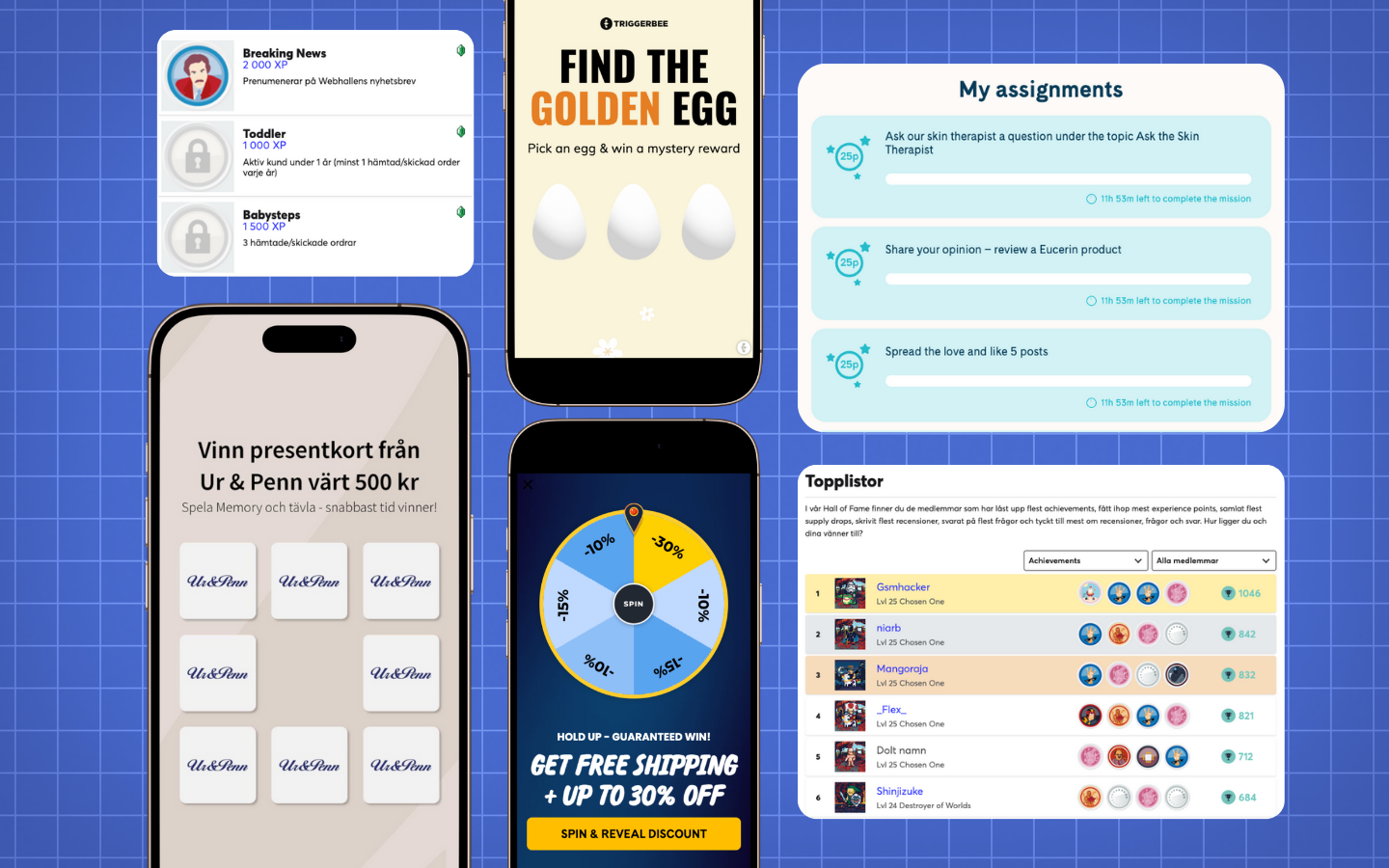Every time you check your Starbucks app to see if you’ve earned a free coffee, open your Sephora account to redeem a reward, or spin a wheel for a discount, you’re engaging with e-commerce gamification.
Nike Run Club rewards users for completing challenges. McDonald’s Monopoly game drives millions in extra sales.
It’s not by accident.
Gamification in marketing taps into human psychology. The same principles that make casinos, video games, and social media addictive are baked into loyalty programs, discount mechanics, and shopping experiences.
Progress bars. Limited-time coupons. Random surprises. It’s all deliberate.
These strategies are carefully designed behavior loops meant to grab attention and keep customers engaged.
Nir Eyal’s book Hooked: How to Build Habit-Forming Products breaks down exactly why people keep using certain apps, websites, and services. And almost all of those concepts can be applied to e-commerce gamification:
- Triggers – External triggers (like a spin-the-wheel popup) grab attention. Internal triggers (like wanting to complete a loyalty challenge) keep people coming back.
- Action – The simpler the action, the more likely a customer is to take it. Clicking a button to claim a reward or playing a scratch card for a discount is effortless and risk-free.
- Variable Rewards – The element of surprise makes rewards way more compelling. Spinning a wheel or unlocking a mystery discount creates the same psychological pull as a slot machine.
- Investment – The more time, effort, or money a customer puts into a program, the harder it is to leave. That’s why tiered loyalty rewards keep people spending. No one wants to abandon their progress.
In this article, you’ll see a bunch of powerful examples of e-commerce gamification that use these strategies to increase engagement, sales, and customer loyalty. Let’s break them down.
Top E-Commerce Gamification Tools
| Tool | Gamification Features | Price from | Ease of Use | Overall Score (⭐/5) |
| Triggerbee | Spin the Wheel, Memory Game, Quizzes, Referrals, Website Surveys | €39 / month for 50K page views. See pricing | ⭐⭐⭐⭐ | ⭐⭐⭐⭐⭐ (4.8/5) |
| OptiMonk | Spin the Wheel, Scratch Cards | $19 / month for 20K page views. See pricing | ⭐⭐⭐⭐ | ⭐⭐⭐⭐ (4.5/5) |
| Wisepops | Gamified popups (Spin the Wheel) | €66 / month for 100K page views. See pricing | ⭐⭐⭐⭐ | ⭐⭐⭐⭐ (4.3/5) |
| Sleeknote | Spin the Wheel, scratch to win, calendars, quizzes & daily deals | €68 / month with gamification. See pricing | ⭐⭐⭐⭐ | ⭐⭐⭐ (3.9/5) |
| OptinMonster | Gamified popups (Coupon Wheels) | $9 / month for 2,500 page views. See pricing | ⭐⭐⭐ | ⭐⭐⭐ (3.8/5) |
| Klaviyo | Spin the wheel | $30 / month for email only. See pricing | ⭐⭐⭐⭐ | ⭐⭐⭐ (3.5/5) |
1. Spin to Win Popups
Popups are easy to ignore. But the second you make them fun, something interesting happens. People stay, engage, and don’t instinctively shut them down. Spin-to-Win popups don’t feel like a regular popup (or maybe they do, but at least people want to click them).
Why it works
You’ve seen it before. A wheel. A spin. A prize. And an almost irresistible format.
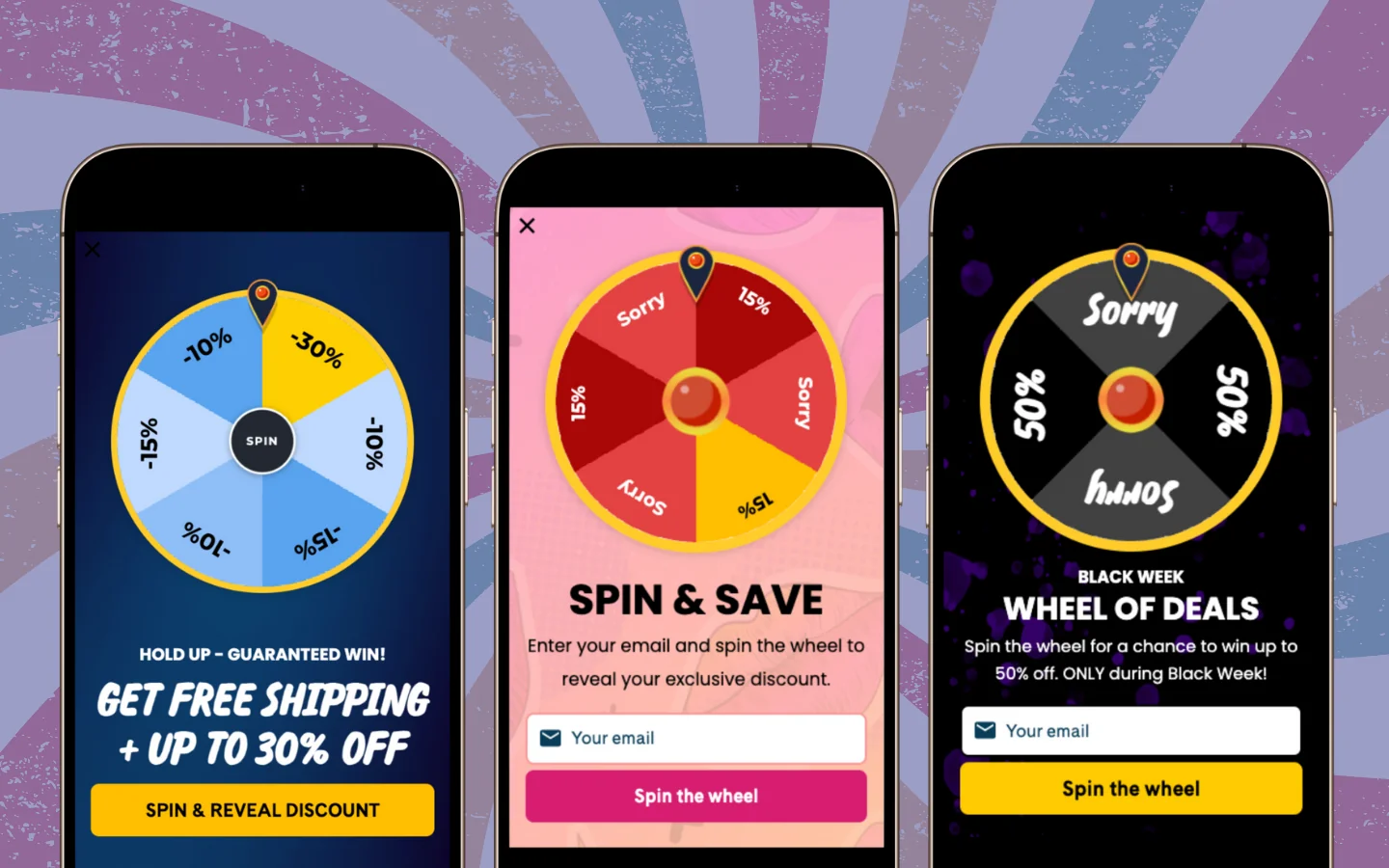
It’s the movement, the colors, the chance to win something better than the usual 10% off. But most of all? Curiosity. Once they see the wheel they need to know what they’ll get.
That’s why it works. The second someone spins they’re engaged. They’ve already played so why waste the prize? Even if they land on something small it feels earned. And when something feels earned they’re more likely to use it.
Here’s how to make it work:
- Give away real rewards (Nope, a 5% off won’t cut it).
- Make every spin feel like a win. Give them an extra spin or a second chance to make it even more exciting.
- Time it right. Show it after a visitor has been on the site for a while not the same second they arrive.
A spinning wheel is instantly engaging
A simple pop-up is easy to ignore, but a spinning wheel? You have to see what happens. It taps into the psychology of variable rewards—the same reason slot machines and social media notifications are so addictive. Customers don’t know what they’ll win, which makes them more likely to play.
Spin to win triggers a psychological commitment
The second someone spins, they’re invested. They earned their discount, and now they don’t want to waste it. And if there’s a time limit? Even better. They’re more likely to act before the deal disappears.
Spin to win popups increases email & SMS signups
Most spin-to-win popups ask for an email or phone number before spinning. But by switching it up and letting your customers win something before they can claim it, you can boost your conversions even more. Either way it’s one of the best list-building strategies out there.
Spin to win boosts conversions with urgency
Ever seen a countdown timer next to a prize? A 15-minute window to claim a discount? That’s loss aversion at work. If customers feel like they might lose their reward they’re far more likely to use it immediately.
Makes discounts feel special
A generic “10% off” coupon on a banner? Boring. Winning a discount through a game? That feels like a win. And when something feels won, people are way more likely to use it.
2. E-commerce quizzes
Instead of making customers browse through endless products, you ask them a few questions and recommend exactly what they need. It’s like having a personal shopper—just automated.
And the results? They speak for themselves. When done right, quizzes don’t just engage visitors. They boost conversions, increase average order value, and make shopping feel effortless.
Case 1: Care Of Gerd’s Personalized Skincare Guide
Care Of Gerd wanted to recreate the in-store consultation experience online. Shoppers needed guidance, just like they would in a physical store.

So with the help of their marketing agency Extend Marketing, they launched a 13-question skincare guide, built with Triggerbee. Customers answered simple questions about their skin type, concerns, and preferences. At the end? They got a fully personalized product recommendation.
The results?
- 79% of customers who started the quiz completed it.
- 87.9% clicked through to view their recommended product.
That’s huge. And it makes sense. When customers see a product that feels made for them they’re way more likely to buy.
Case 2: Apohem’s Sunblock Finder Quiz
Apohem took a similar approach—but for sunblock. Instead of making customers scroll through dozens of SPF options, they built a multi-step quiz that instantly recommended the right product based on their needs.

- 7.3% of visitors started the quiz.
- 15% bought something after completing it.
- 42% bought their recommended product.
No opt-in required. The whole point was to give their users a frictionless experience and guide them to the right choice without forcing them to sign up for anything.
Why it works
Personalizes the shopping experience
Instead of customers guessing what to buy, the quiz tells them exactly what fits their needs. No decision fatigue. No endless scrolling. Just a straight path to the perfect product.
Increases conversion rates
When people get personalized recommendations, they’re way more likely to buy. Apohem’s 42% conversion rate for recommended products proves it.
Improves the shopping experience
A skincare routine? Picked out for you. The right sunscreen? Already matched to your skin. Customers don’t have to think. They just follow the results.
Works for almost any niche
Skincare. Supplements. Clothing. Fitness. Whether it’s finding the right pair of jeans or choosing a protein powder, quizzes guide customers to exactly what they need.
And the best part?
You can use quizzes for way more than just recommendations. Build an “Are you a VIP?” quiz to gamify loyalty. Use style quizzes to upsell entire outfits. Or create a gift finder during the holidays.
3. Mystery Rewards
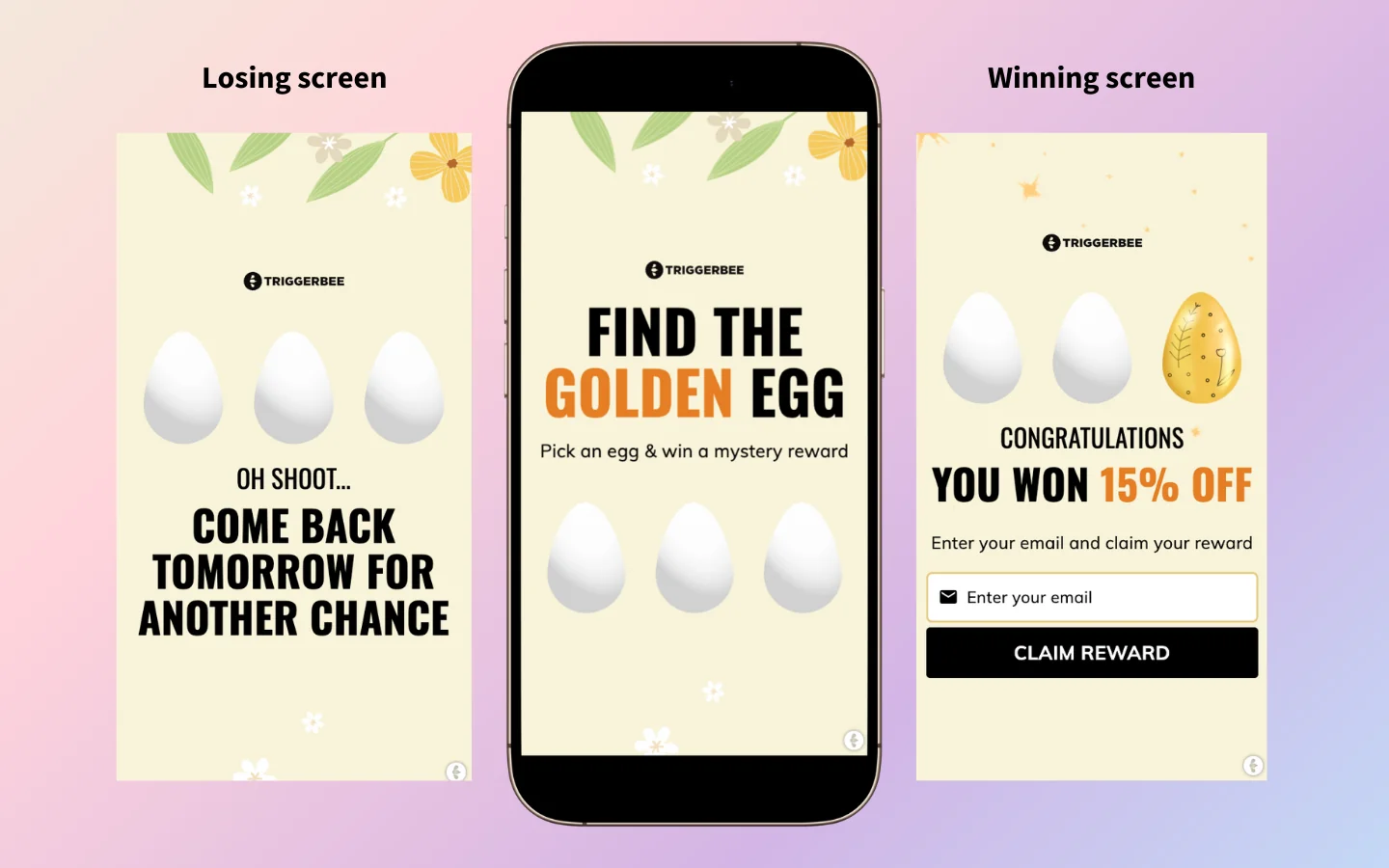
Mystery rewards are all about psychology. Humans hate not knowing what’s hiding behind the curtain. That’s why surprise rewards work so well.
Instead of just handing out a discount, you make it a mystery. Customers click, tap, or pick a hidden reward. Could be 10% off. Could be free shipping. Could be something way better. And that’s the whole point. The uncertainty makes it impossible to ignore.
Why it works
Instant curiosity
If there’s one thing we need to do, it’s uncover secrets. When customers see a hidden reward, they have to check what’s inside. It’s why scratch-off tickets and loot boxes are so addictive. The not knowing makes it exciting.
Boosts engagement without feeling forced
Nobody wants to feel tricked into interacting with a brand. A mystery reward flips that. Instead of being a hard sell, it’s an invitation. Customers want to play because they feel like they’re getting something special.
Makes discounts feel more valuable
A 10% off banner? Meh. A 10% discount inside a mystery box? Now we’re talking. It’s the same discount, but packaged in a way that makes it feel completely different. And when people feel like they won something, they’re way more likely to use it.
Encourages repeat visits
Some mystery offers reset daily or weekly. Customers who miss out will check back just in case something better is waiting. It’s the same trigger that keeps people using Instagram and Tiktok on a daily basis.
And the best part?
You can run these in so many ways. Hide a daily reward in an Easter egg hunt. Offer mystery discounts in exchange for an email signup. Or gamify free gifts with a “Pick a Box” campaign. The core gamification mechanic stays the same, but the execution of it is very flexible.
4. Scratch & Save

Imagine a scratch-off ticket, but digital. Instead of handing out a standard discount you let customers reveal their own deal. And that tiny bit of effort makes it both engaging and rewarding.
People love scratch cards. The act of slowly revealing the reward introduces excitement, even if it’s the same 10% off you’d normally give away.
Why it works
Taps into curiosity & the need to reveal
When people see something hidden they have to know what’s underneath. It’s the same psychological pull that makes mystery boxes, lottery tickets, and even advent calendars so satisfying.
Makes discounts feel more valuable
A popup that says “Here’s 15% off” is boring. Everyone and their aunt uses these. But a scratch card where you uncover 15% off feels like a win and it’s way more exciting.
Encourages instant action
Most Scratch & Save campaigns come with an expiration date. Simply adding a ticking clock adds urgency and make customers act fast before their deal disappears.
Turns discounts into an experience
Compared to a standard form where you just sign up and receive a coupon code, the act of scratching turns it into a micro experience. I mean, you can’t start scratching off the top layer and stop halfway through. And once they’ve revealed the prize? They’re way more likely to use it.
And the best part?
It works for almost any campaign. Run it as a Black Friday special. Use it to boost email signups. Or make it exclusive for VIP customers. The format stays the same, but the angle of it can be tweaked endlessly.
5. Daily Deals & Challenges
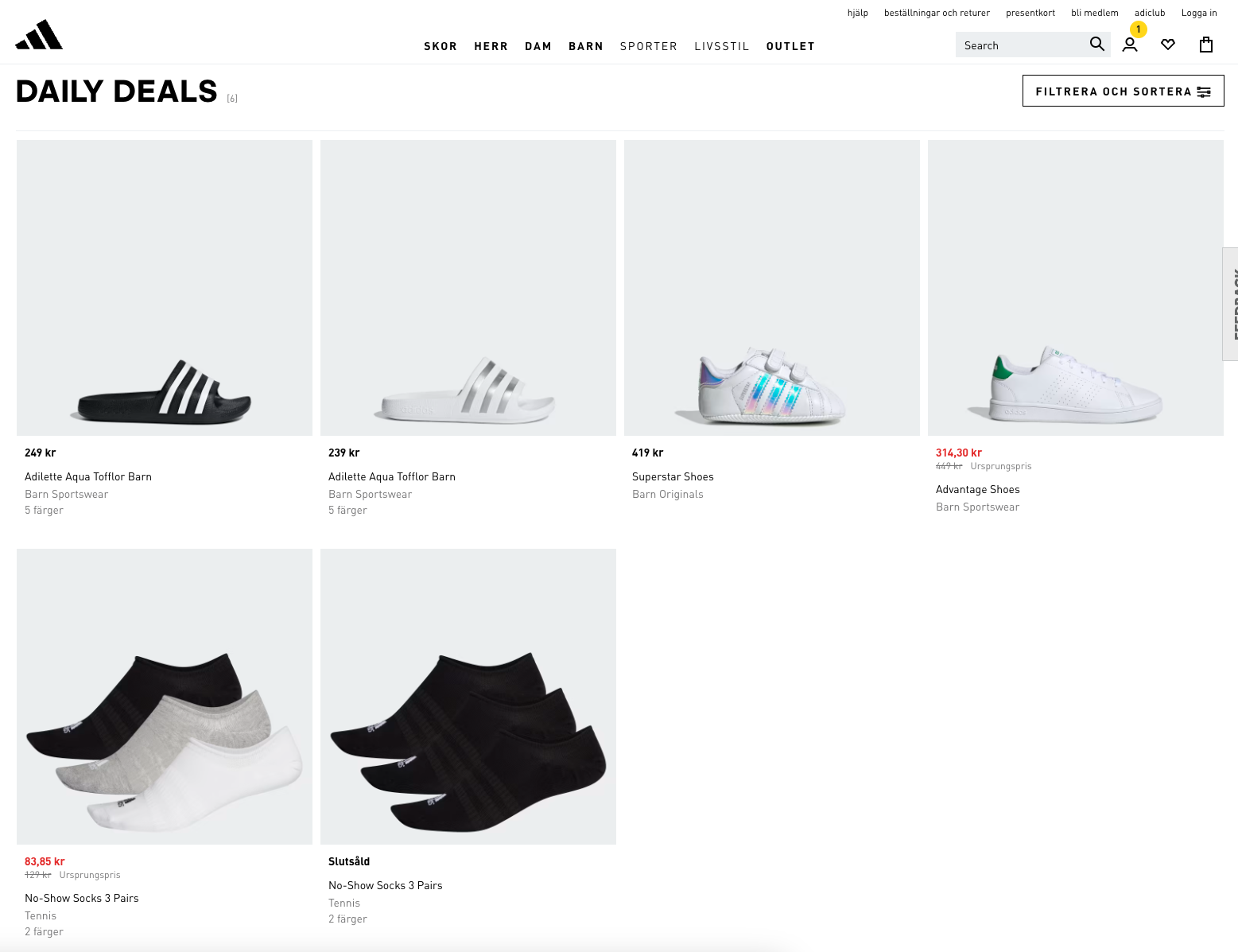
If you are looking for repeat engagement, then daily deals are the way to go. Instead of a one-time discount, your customers get a reason to return every single day. Whether it’s a new deal, a challenge to complete, or another chance to win. It builds a habit.
Power, a Swedish retailer, nailed this with their Wheel of Deals campaign during Black Week. Customers could spin the wheel three times a day, then come back for three more spins the next day. The result? People checked in daily, hoping to score a bigger deal.
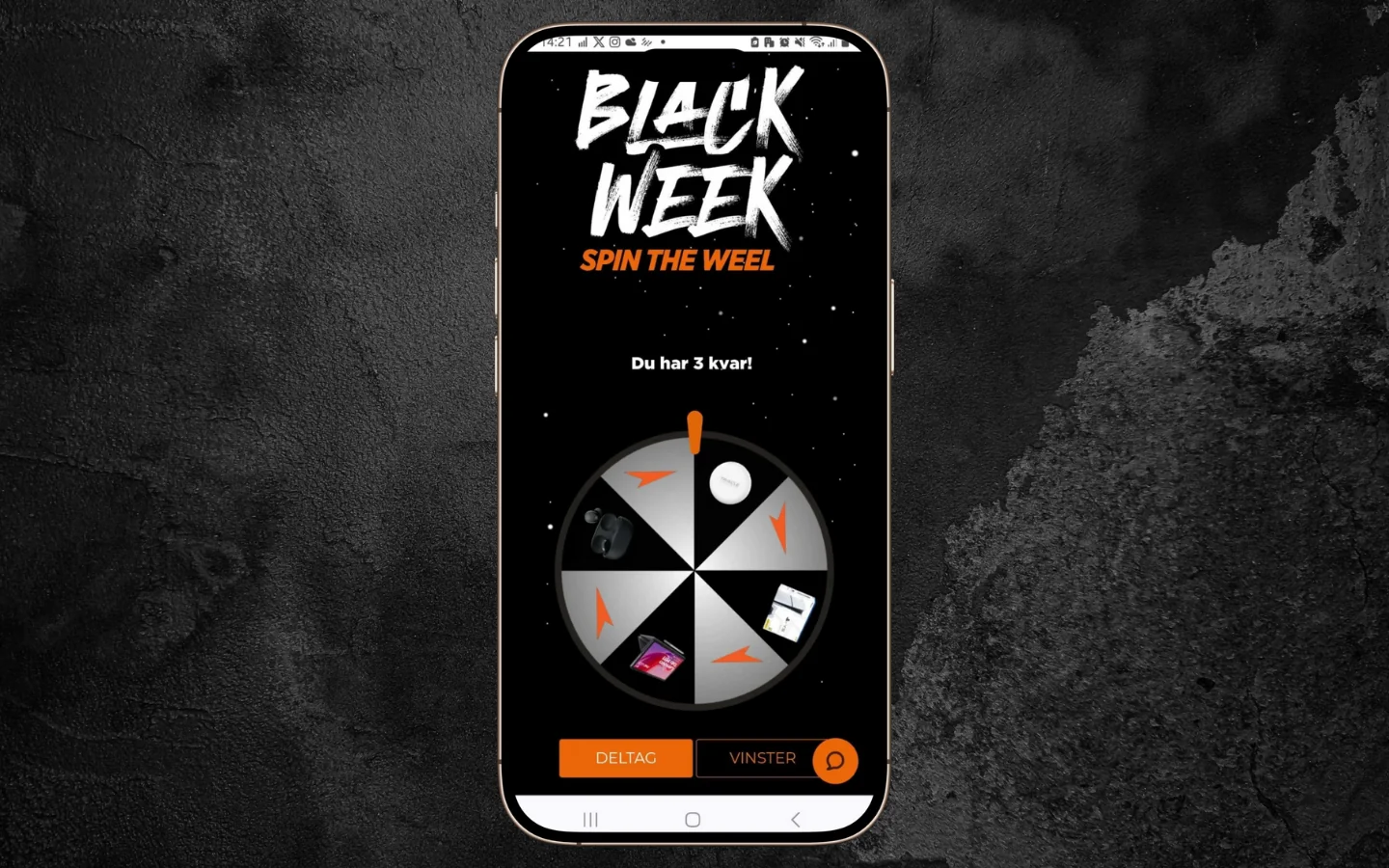
Why it works
Encourages repeat visits
If today’s deal is good, tomorrow’s might be better. That’s the hook. Customers return just to see what’s next, and every time they come back they’re one step closer to buying.
Triggers FOMO
Miss a day, miss a deal. That feeling of losing out is a powerful driver. Whether it’s limited-time discounts or an exclusive challenge, people don’t want to be the ones who could have saved more.
Turns shopping into a daily habit
Ever opened a shopping app just to check for new deals? You want to create a reason for your customers to build a routine of checking in (even if they don’t plan to buy). Because when the right deal hits they’re ready to make a purchase.
Perfect for multi-day holidays
Daily deal campaigns shine when shoppers are already in buying mode. Black Week, Christmas season, Summer sales. Power’s multi-day spin-to-win strategy kept customers engaged the entire Black Week, not just on Black Friday.
But the best part about daily deals?
You can run this in so many ways. A daily scratch card. A progress-based challenge where customers unlock bigger rewards. Or even a mystery deal where the discount changes every 24 hours. The key is to make every visit worth it.
6. Memory & Puzzles
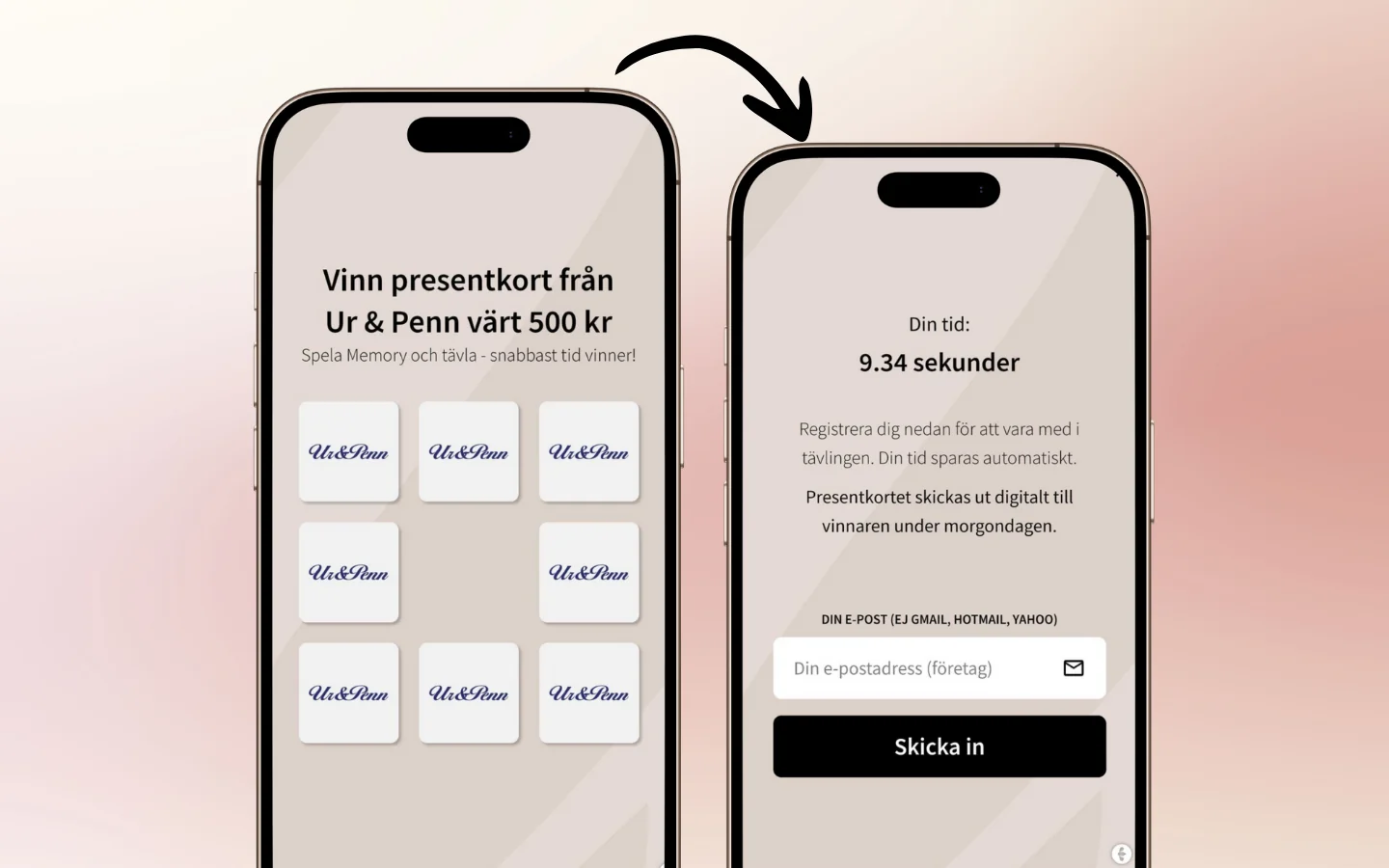
Memory games are super intuitive and most people know exactly what to do:
- They see a bunch of cards
- Find the pairs
- Win the reward
Everyone’s played memory or find the pairs as a kid. It’s second nature. No instructions needed.
Däckskiftarna’s Memory signup campaign: A 250% lift in signups
Däckskiftarna, together with their marketing partner Extend Marketing, wanted to test a simple question:
“Does gamification actually make a difference?”
- Variant A: Traditional Popup – A classic signup form with a simple message: Win a free tire change & tire hotel! This variant had a 0.97% conversion rate.
- Variant B: Memory Game Signup – Same message and same prize. But instead of showing a sign up form, they started by letting their visitors play a game of memory. The result? A 3.4% conversion rate and a 250% increase compared to the non-gamified version.
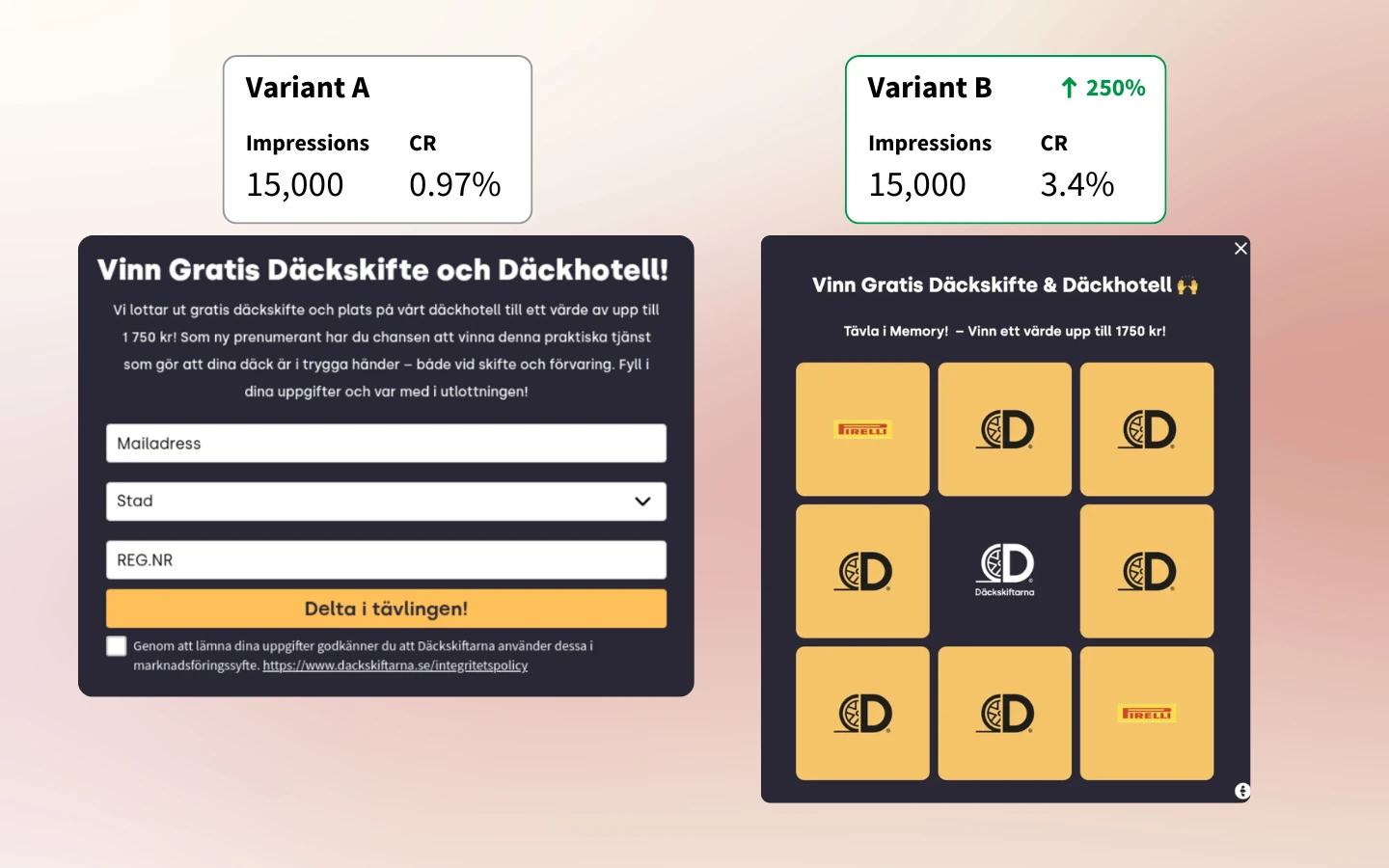
Why it works
Instantly grabs attention
A normal signup form is forgettable. A memory game? That’s something people stop for. The moment they start flipping tiles they’re invested. And once you’ve found a pair it’s very hard to stop halfway through.
Makes signups feel like a reward
Instead of just handing over their email, customers earn their signup reward. And when something feels earned, people value it more.
Boosts conversions (without feeling like a hard sell)
Regular popups are annoying. People want to be entertained, and with a game like Memory, they’re way more open to handing over their contact details.
Turns regular forms into interactive experiences
Regular sign up forms are everywhere, and people find them annoying. Memory games and puzzles make them fun. And fun gets remembered.
And the best part?
You can tweak the angle in infinite ways. Instead of saying it’s a memory game, say it’s a quick puzzle. Make visitors match icons to unlock a deal. Or create a challenge where the memory acts as a discount booster. The format is super flexible.
7. Reward Points
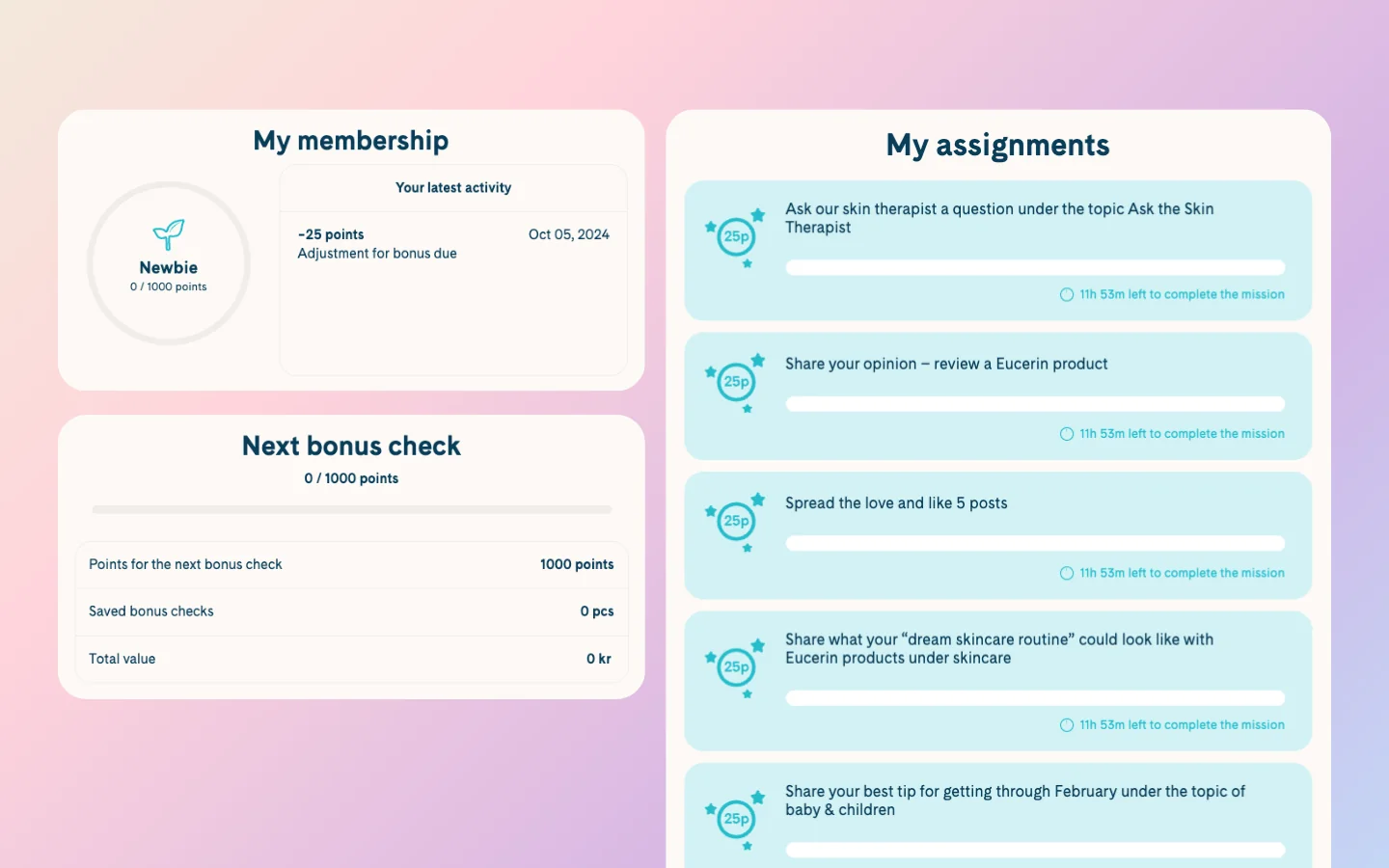
You shop, you earn points, you get rewards. It’s the simplest gamification model there is and it works.
Why? Because it taps into commitment and sunk cost psychology. The more points your customers collect, the harder it is to not use them. If you are close to a reward, you’ll want to make another purchase.
Loyalty points are literally everywhere. Starbucks Stars. Sephora Beauty Insider. Airlines. Gyms. Coffee shops. Points programs have been used for decades because they do one thing better than anything else… they keep customers coming back.
Why it works
Encourages repeat purchases
When customers know they’re earning something extra with every order they choose to buy from the same store instead of looking elsewhere.
Builds long-term loyalty
Points works because they track progress. If you’ve spent months collecting points, you’re not going to abandon them and start over with another brand. This is exactly why people RAVE about their American Express points.
Makes spending feel justified
If customers know their purchase gets them closer to a freebie, that little nudge can push them to spend a little more than they planned.
But here’s an important thing to remember…
Points don’t matter if people forget about them. Here are a few tactics, or “Loyalty boosters” as we call them, you can use to remind people of their points:
Loyalty boosters: How to get customers to use their points and rewards
Most brands set up loyalty programs and just assume customers will redeem their points. But most people have no idea what their point status are. So they let rewards expire, because they have other stuff to think about.
Smart brands fix that with reminders, nudges, and personalized popups that bring those unused points back into the customer’s mind at the right time.
Case 1: KICKS Loyalty points reminder
KICKS had a problem. Members earned bonus checks and reward points, but forgot to redeem them. That meant lost sales and lower engagement. So they used Triggerbee to target members with unused rewards and reminders based on their membership level.

The result? A 480% higher click-through rate compared to regular promotional popups.
Case 2: Apohem’s Membership Coupon Reminder
Apohem wanted more people to use their loyalty coupons. Instead of waiting for customers to remember, Apohem proactively reminded them at the perfect time.

Here’s what they did:
- Identified members with unredeemed coupons in their CRM.
- Synced that data with Triggerbee to create a targeted audience.
- Designed a personalized popup that appeared when those members visited Apohem.se.
And it worked.
- 19.11% clicked the reminder.
- 28.6% went straight to purchase.
Just by reminding customers what they already had they got a huge lift in conversions.
How to boost engagement in any points program
The biggest mistake 9/10 loyalty programs commit is to let points sit unused.
Here’s how to make sure customers use them:
- Send reminders before points expire. Urgency works because no one wants to waste rewards.
- Show available points on-site. A small banner saying “You have 1,200 points. Redeem now!” can be the push they need.
- Offer special “points-only” deals. Let customers spend points on exclusive products or limited-time offers.
- Send tier-based nudges. If they’re this close to the next reward level, remind them how much they need to spend to get there.
Loyalty programs work great, but only if customers remember to use the points. The right reminders at the right time? That’s what turns potential sales into real revenue.
8. VIP Tiers & Progress Bars
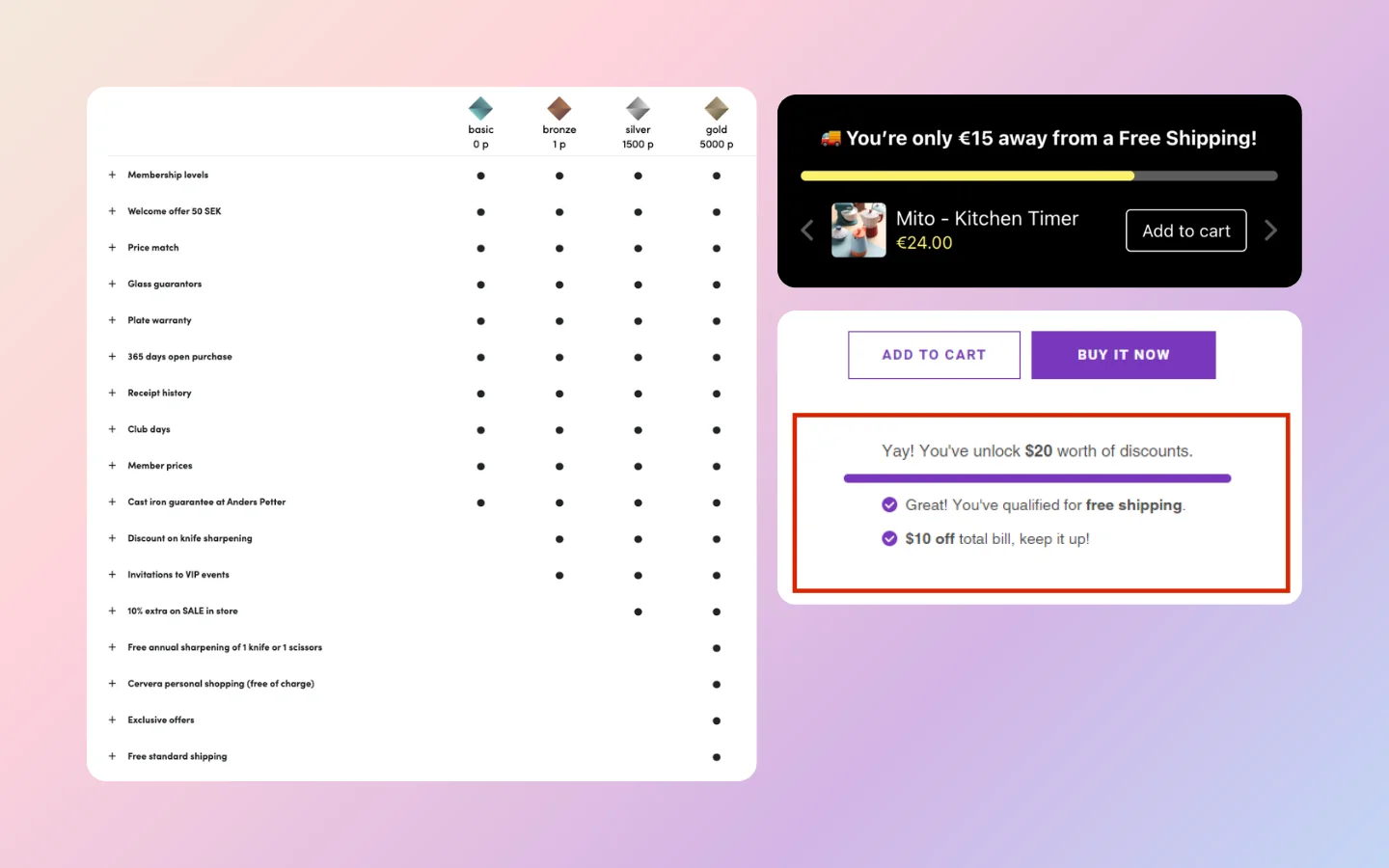
People love feeling like VIPs. They want to be part of the inner circle, get exclusive perks, and see visible proof that they’re moving up. That’s why tiered membership levels with progress bars work so well.
Instead of just collecting points, customers level up. They go from Bronze to Silver, Silver to Gold. Every purchase brings them closer to better rewards. And that small shift, from “earn points” to “unlock status”, completely changes the way people engage with loyalty programs.
Why it works
Makes loyalty feel like an achievement
A basic points system is passive. But VIP tiers gamify the experience.
Taps into exclusivity & status
Getting to the next tier is all about access. Early product drops, VIP sales, faster shipping. These types of rewards feel premium. And once someone reaches a higher tier they’re not going to let that status go.
Triggers loss aversion
If customers know they need to spend a little more to stay in the Gold tier next year, they’ll do it. Nobody wants to be downgraded. It’s the same mechanic that keeps people renewing airline status, gym memberships, and VIP programs.
Progress bars make everything more addictive
Ever noticed how you’re way more motivated to finish something when you can see your progress? That’s why progress bars work. If someone sees they’re 80% to the next VIP level, they need to close the gap.
How brands use it
Most big loyalty programs use tiered rewards because they work.
- Sephora Beauty Insider – Spend more, level up, unlock better rewards. Simple but effective.
- Airline Status Programs – Keep flying or lose your perks. A classic.
- Nike Membership – Special access to drops, events, and exclusive content based on loyalty.
And e-commerce brands can use this just as easily.
- Show customers their current tier and how close they are to the next one.
- Offer VIP-only perks that feel exclusive. Early access, premium support, invite-only sales.
- Add a countdown so customers feel the urgency to shop again before they drop down a level.
VIP Progress in Action
One of the easiest ways to boost engagement in VIP programs is with reminders and progress tracking. Here’s an example of how KICKS constantly reminds their customers about how many points they have left until the next tier.

9. Leaderboards & Social Competition
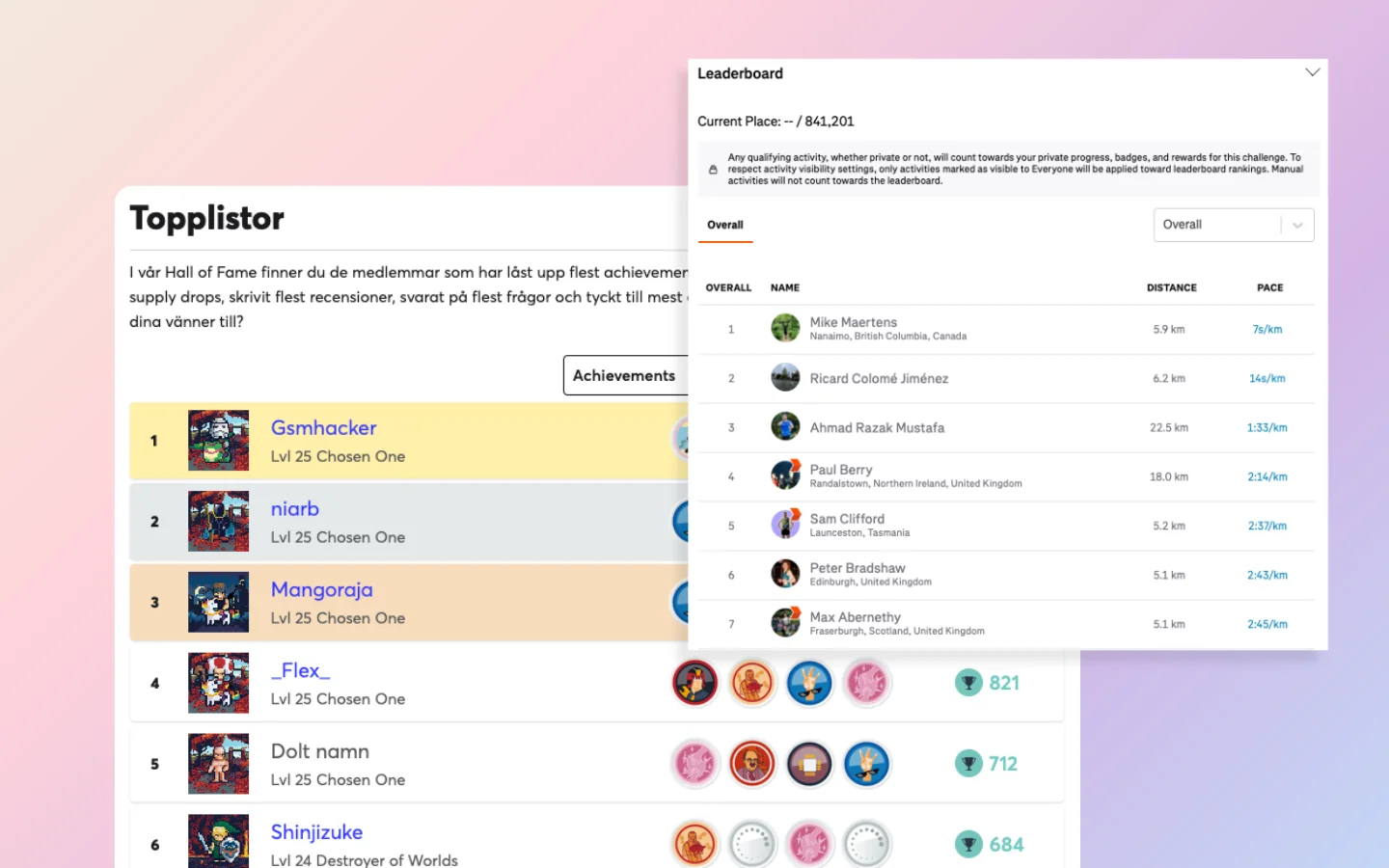
Leaderboards tap into a deep human desire… The need to win. The need to see our name at the top.
And the second you turn shopping into a competition, people are hooked.
Leaderboards and social competitions make customers feel like they’re part of something bigger. Instead of just asking customers to buy or refer people randomly, leaderboards create a reason to act. And if they’re close to the top you know they’ll push harder to win.
Why it works
Creates friendly competition
Nobody wants to be in last place. Even if there’s no massive prize, just seeing your name on a leaderboard makes you want to climb higher.
Builds social proof
A leaderboard full of top referrers or buyers sends a strong message—people love this brand. It makes others want to join in too.
Rewards the most engaged customers
The people at the top of the leaderboard are your biggest fans. Give them VIP perks, exclusive rewards, or early access, and they’ll keep coming back.
10. Gamified referrals
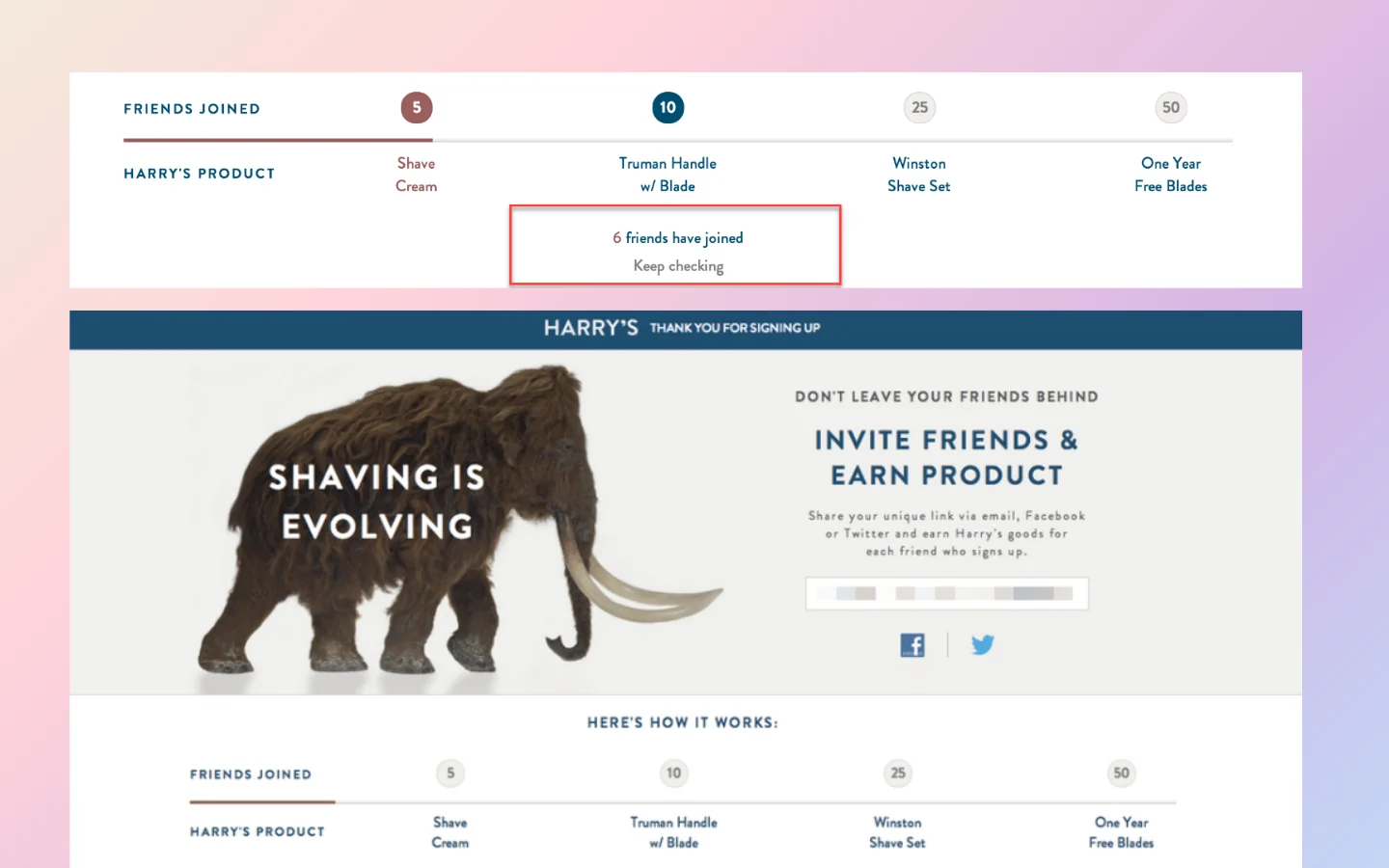
Referrals are nothing new. “Share this code with a friend and get 10% off.” You have seen it before, I have seen it before, we’ve ALL seen it before.
But gamified referrals? That’s *almost* completely different.
Instead of a basic “get a discount” setup, gamified referrals turn sharing into a challenge, a race, or a progress-based reward system. The more you refer, the bigger and better your rewards.
Why it works
Organic expansion of your customer base
A friend’s recommendation beats any ad. When customers refer people, they bring in highly qualified leads who already trust your brand.
Keeps customers engaged after their first purchase
A standard referral program is a one-time thing. But when you gamify it? Customers come back again and again to check their progress, climb the ranks, and unlock more rewards.
Rewards loyalty and drives growth
You’re not just acquiring new customers—you’re keeping existing ones actively involved in your brand. That’s what makes referral gamification so powerful.
How you can gamify referrals
Gamified referral programs go one step further from the ordinary “share this link” setup. Here’s how to make your referral program more addictive:
- Add tiered rewards – The more people you refer, the better your reward. One referral gets you 10% off, but five gets you exclusive VIP perks.
- Leaderboards – See where you rank among top referrers and compete for top prizes.
- Add milestone bonuses – Unlock extra points or surprise gifts at referral milestones like 3, 5, or 10 signups.
- Countdown challenges – Limited-time referral contests that push customers to act fast.
Platforms that do this well
Want to gamify your referrals? These platforms make it easy:
- Triggerbee – Can integrate with loyalty programs to reward top referrers dynamically.
- Viral Loops – Great for leaderboard-based referral programs.
- ReferralCandy – Simple and effective for tiered referral rewards.
11. Badges & Achievements
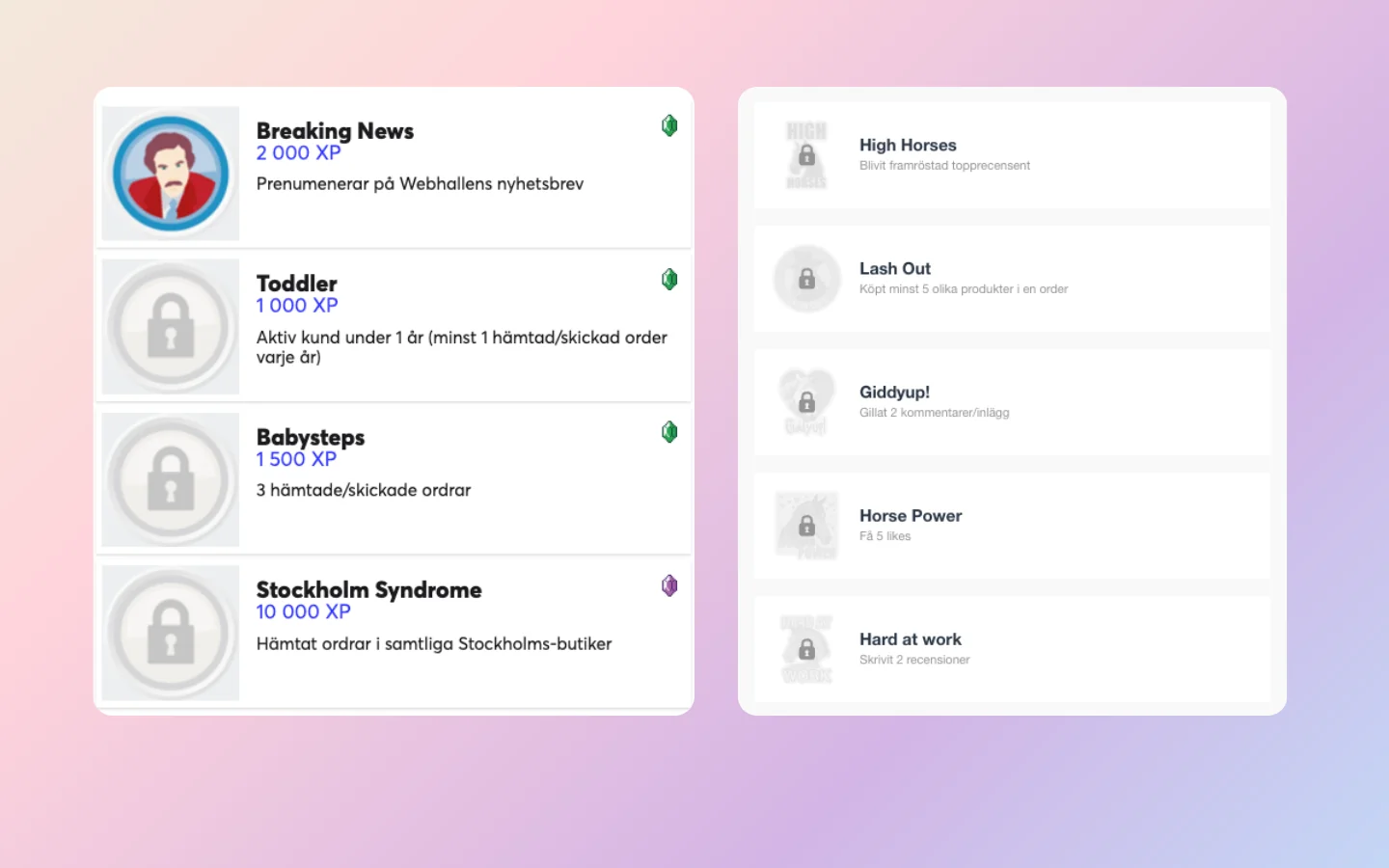
It’s a simple trick but incredibly effective. A well-designed badge system turns passive shopping into active participation. Customers are unlocking achievements. They’re progressing. And once that mindset kicks in their engagement usually skyrockets.
Why it works
Recognizes customer efforts
People love feeling appreciated. Whether it’s a “First Purchase” badge or an “Elite VIP” title, small rewards make customers feel seen and valued.
Encourages continued engagement
The moment someone earns one badge, they need to get the next one. It’s the same reason video games keep players grinding to unlock new levels.
Turns shopping into a game
Earning rewards just for buying feels like getting something extra. It makes every purchase more fun and memorable.
How E-Commerce brands use badges
Badges drive real engagement.
Hööks: Uses Gamifiera to reward loyal customers with badges for purchases, reviews, and engagement. Horse lovers love this because it turns shopping into a community-driven experience.
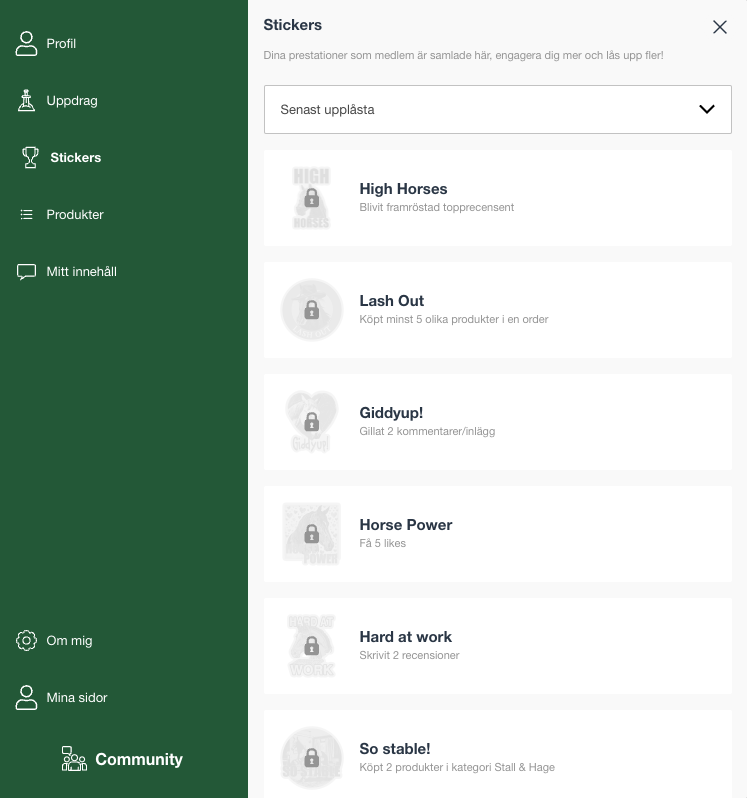
Apohem: Their loyalty program includes achievement-based rewards to keep members engaged beyond just discounts.
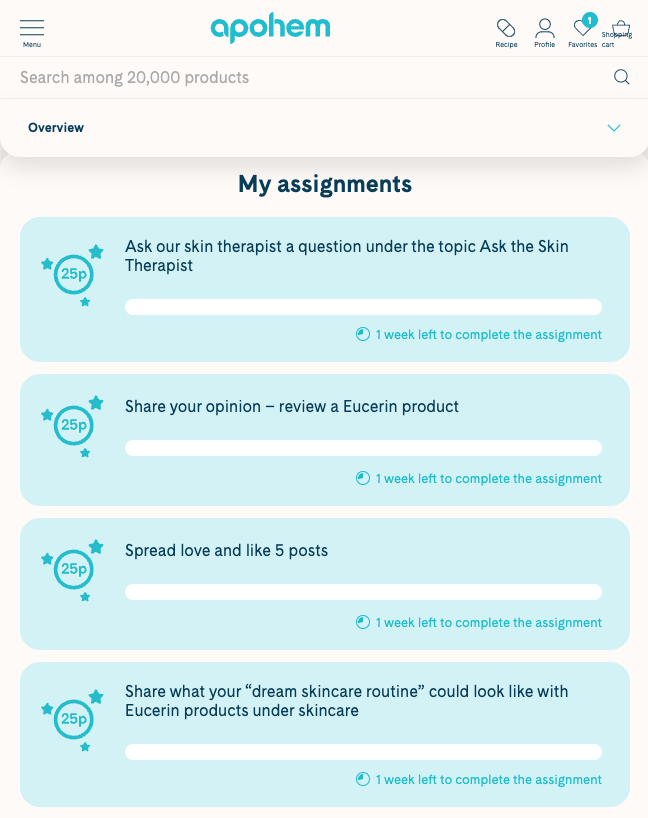
Types of badges that work
Want to implement badges in your e-commerce store? Here are some great ideas:
- First Purchase Badge – Welcomes new customers with an instant reward.
- VIP Tier Badges – Bronze, Silver, Gold. Simple, effective, and makes status feel earned.
- Review Badges – Encourage repeat reviews by rewarding customers who leave feedback.
- Referral Badges – Acknowledge top referrers and make them feel like brand ambassadors.
- Milestone Badges – “100 Orders Club” or “Spent $1,000” makes big spenders feel seen.
The psychology behind badges and achievements
Badges aren’t just cute icons. They create engagement loops that keep customers coming back.
- They act as micro-rewards. Customers don’t need to wait for a discount—they get instant recognition.
- They create social proof. Public leaderboards or customer profiles showing earned badges make others want in.
- They make loyalty visible. Seeing progress makes people want to keep going.
Summary
People love to play. They love to win. And when shopping feels like a game instead of just another transaction,they stay longer, engage more, and spend more. It’s just psychology.
Spin-the-wheel popups? They tap into curiosity.
Memory games? They make signups feel like a reward.
Leaderboards? They turn the entire experience into a competition.
VIP tiers? They make loyalty visible and nobody wants to lose status.
But the best part about e-commerce gamification is that it works almost everywhere. You don’t have to be a billion-dollar brand to use it. Even simple tweaks like…
- a scratch card
- a daily challenge
- or a points reminder
…can keep customers engaged and coming back.
Because at the end of the day, people don’t just want discounts. They want an experience.
